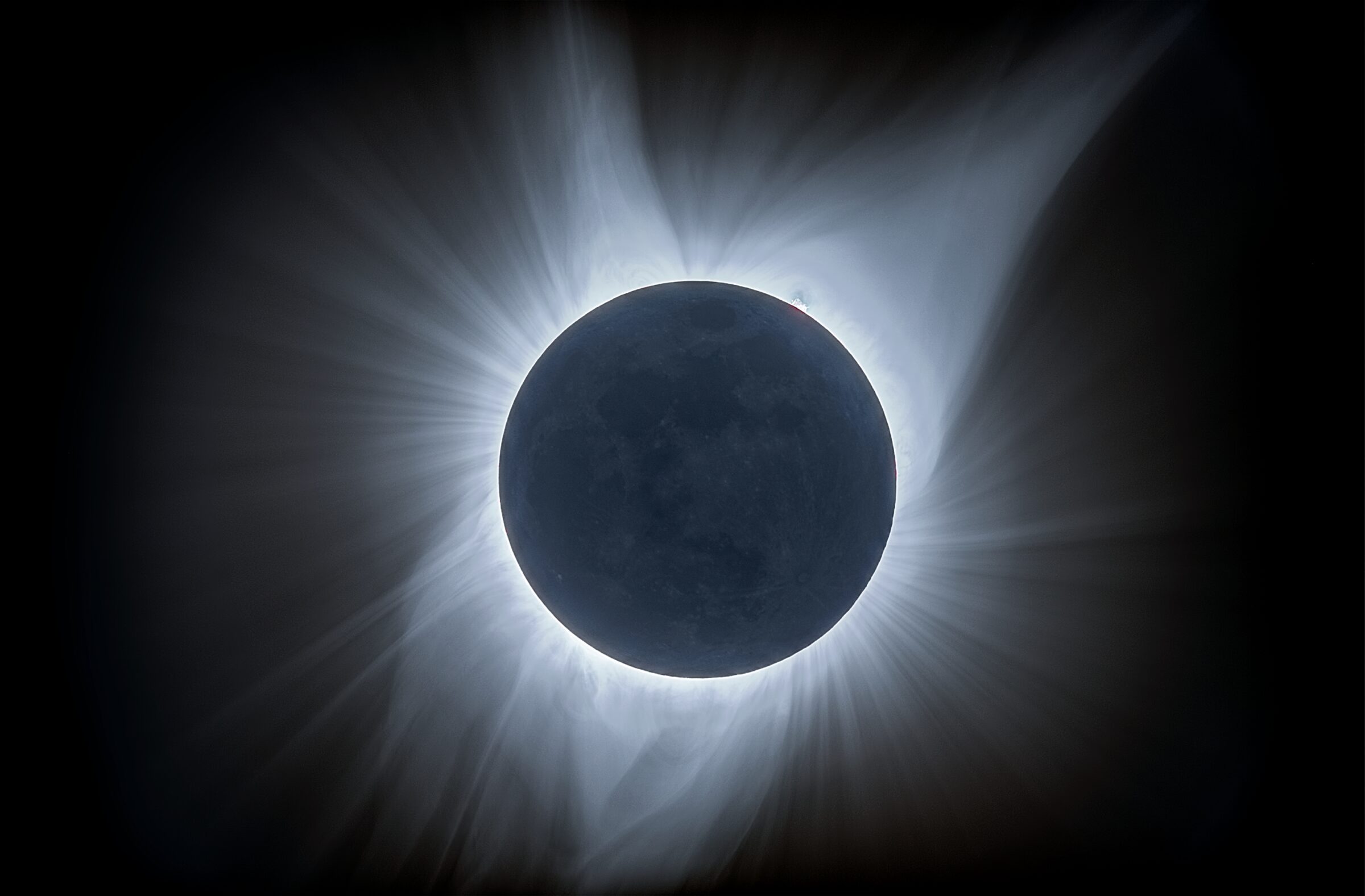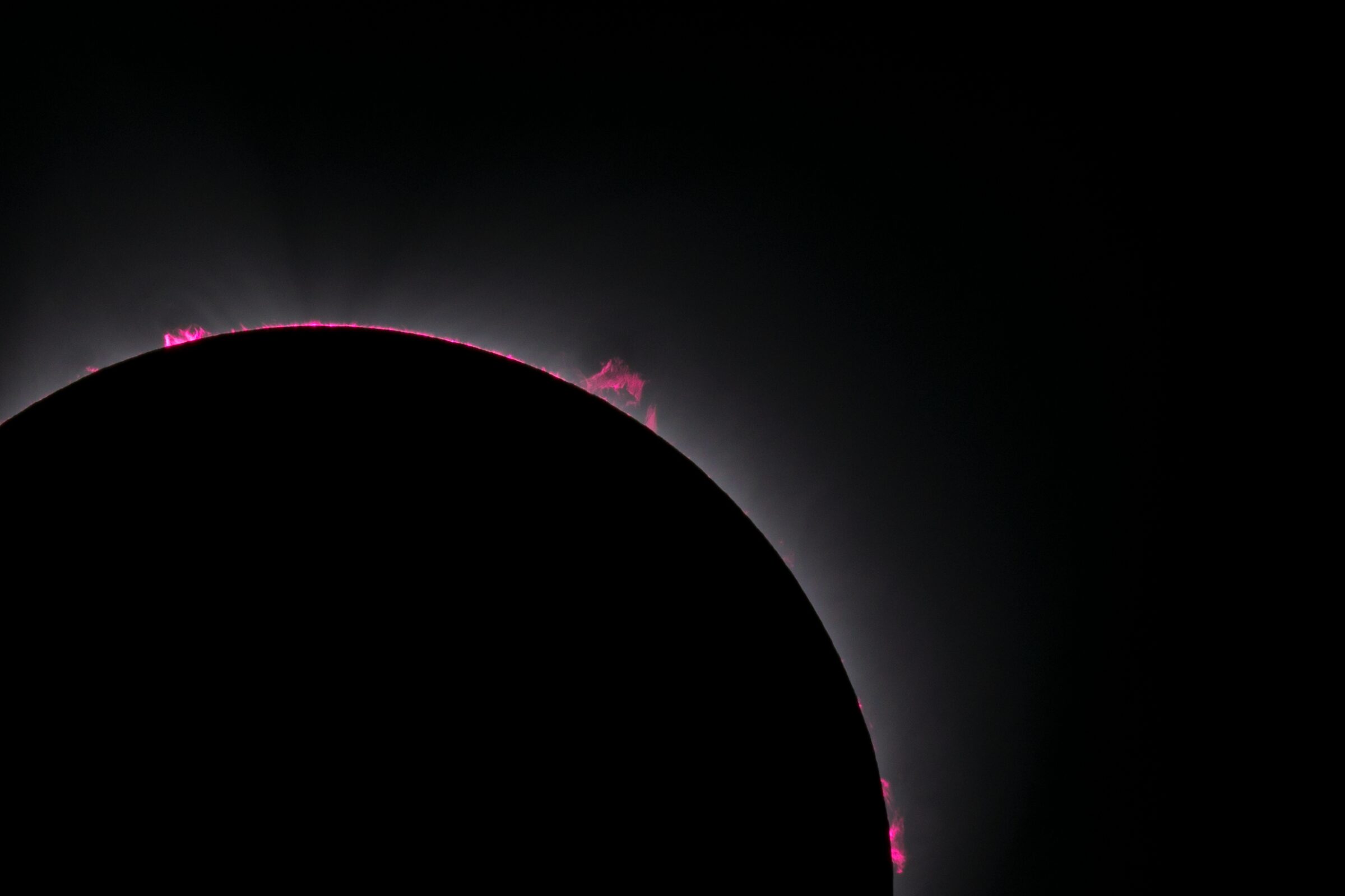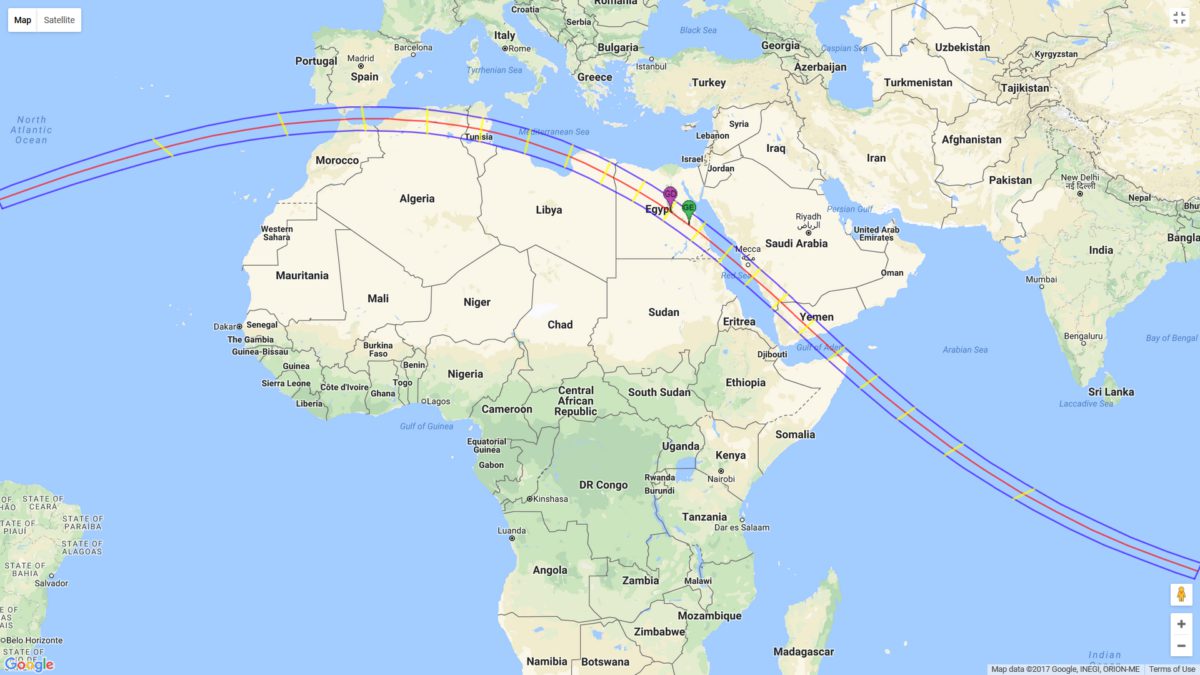Bruce Betts & Sarah Al-Ahmed • Dec 11, 2020
Your guide to future total solar eclipses
Facts Worth Sharing
- The next total solar eclipse will pass through Spain, Iceland, and Greeland on August 12, 2026.
- There are three upcoming total solar eclipses in the 2020s.
- Total solar eclipses are possible because our Sun and Moon are the same angular size in our sky, but that won't always be the case. Our Moon slowly moves away from the Earth over time. In about 500 to 600 million years, the Moon will appear too small in the sky for there to ever be another total solar eclipse on Earth again.
Why watch a total solar eclipse?
Every space fan should try to view a total solar eclipse at some point in their life. It is a truly unforgettable experience. For a few minutes during totality, when the Moon completely covers the Sun, the day becomes night, the horizon flushes with the colors of sunset, and planets and stars fill the sky. The fiery prominences that extend outward from the Sun's surface and the outer atmosphere of the Sun, the corona, become visible to the naked eye. Animals in the path of totality also exhibit strange behaviors as darkness falls. The experience is so moving that many who witness a total solar eclipse become "eclipse chasers," people who travel incredible distances to experience totality once more.
Total solar eclipses, which occur when the Moon completely blocks the view of the Sun, happen every year or two, but it takes careful planning to be in the right place at the right time to see one. Partial solar eclipses, where the Moon only partly covers the Sun, are visible over a wide area. In contrast, total solar eclipses are only visible along a narrow track of the Earth's surface. The viewer must be located along the eclipse's path of totality in order to see the event. Weather conditions and travel distance can make it difficult to view a total solar eclipse, but those who have witnessed the breathtaking sight generally agree that the payoff is well worth the effort.

Total solar eclipses are actually quite rare in the universe. On Earth, we tend to take total solar eclipses for granted because they seem relatively commonplace, but the odds of living on a planet where they occur are mindboggling. Total solar eclipses can only happen on planets with moons that are the same angular size in the sky as their host star (or stars). Were our Moon to be smaller on the sky, it would not be able to completely block the Sun, creating only partial or annular solar eclipses. If the Moon appeared larger in the sky, it would cover too much of the Sun and impede our ability to see our star's prominences and atmosphere during totality.
We live at an extraordinary time and place in the universe where total solar eclipses are possible, but that will not always be the case. The gravitational interaction between our planet and its Moon causes the Moon to slowly move away from the Earth over time, at a rate of about 3.78 centimeters (1.48 inches) per year. In about 500 to 600 million years, the Moon will appear too small in our sky for there to ever be another total solar eclipse on Earth again.

Bill Nye's top eclipse tip: Protect your eyes
Bill Nye, CEO of The Planetary Society, has some suggestions for staying safe during a solar eclipse.
How do you view a total solar eclipse?
Planning is critical when it comes to viewing total solar eclipses. Make your travel decisions early and create a plan of action for the event of poor weather.
It is also crucial that the viewer have proper eye protection during total solar eclipses. There is a brief time during totality when it is safe to look at a total solar eclipse with the naked eye, but it is imperative that viewers use eye protection during all other parts of the eclipse and at all times during partial or annular solar eclipses. Sunglasses are not sufficient protection for looking directly at the Sun. Viewers should acquire specialized eclipse glasses ahead of the event. Welder's glasses are also a good option, provided that they are grade #14 or darker.
It is very dangerous to look at the Sun through unfiltered telescopes, binoculars, cameras, and other optical devices. Filters are available to safely view the Sun through optical devices, provided that they are correctly used.
Another fun way to view solar eclipses, which is well-suited to children, is to use simple pinhole projection techniques. Pinhole projectors are easy to make. Simply poke a small hole in a piece of paper or cardboard and cast an image of the Sun onto a sidewalk or a piece of paper through the hole. You can achieve a similar effect by placing one hand on top of the other, with fingers partially spread, to use the gaps between fingers as pinhole projectors. In either case, the pinhole will cast an image of the Sun that will allow you to safely view the solar eclipse's progress.
There are three upcoming total solar eclipses that occur through the end of the 2020s. Make plans early to ensure that your eclipse viewing is unstressful and safe.
How to Make a Pinhole Projector Want to see an eclipse without wearing solar glasses? Try this easy trick to make a pinhole projector.
So, when and where are the next eclipses to chase? Here is a summary of the remaining total solar eclipses in the 2020s.
12 August 2026 (Greenland, Iceland, N. Atlantic, Spain)
This eclipse begins in north-central Russia, passes over the north polar region, Greenland, western Iceland, and ends in northern Spain at sunset. The maximum duration of totality will be 2 minutes and 18 seconds.
2 August 2027 (N. Atlantic, Spain, Morocco, Algeria, Tunisia, Libya, Egypt, Saudi Arabia, Yemen, Somalia, Indian Ocean)
This eclipse begins over the Atlantic Ocean, moves across southern Spain and Morocco, and proceeds across North Africa through Algeria, Tunisia, Libya, and Egypt. It then moves through the Arabian Peninsula, crossing Saudi Arabia and Yemen before passing over Somalia and the Indian Ocean. The greatest totality duration along the path is an astounding 6 minutes and 22 seconds, occurring in Egypt near Luxor.

22 July 2028 (Indian Ocean, Australia, New Zealand, S. Pacific)
This eclipse begins over the Indian Ocean, crossing the Cocos (Keeling) Islands and Christmas Island before reaching a maximum duration of 5 minutes and 9 seconds in northern Australia. It will then travel to eastern Australia, passing directly over Sydney with a duration of about three and a half minutes, and proceeds across southern New Zealand and into the South Pacific Ocean.

Get involved
Total solar eclipses are incredible events that deserve to be shared. You know your audience best; we've got tools to help. Here are our suggestions:
Tell the world:
Spread the Facts Worth Sharing at the top of this article on social media
Make plans early to get your friends and family hyped for future eclipses
Send this page to others
Share pretty pictures of total solar eclipses
Learn more:
Learn about total solar eclipses
Find out how to make a pinhole projector
Stay up to date on current and future eclipses by signing up for The Downlink, our weekly newsletter
Ready to take your next steps as a space advocate? Become a member and find out how you can take action in your community and government.
Action Center
Whether it's advocating, teaching, inspiring, or learning, you can do something for space, right now. Let's get to work.
Support our core enterprises
Your support powers our mission to explore worlds, find life, and defend Earth. You make all the difference when you make a gift. Give today!
Donate

 Explore Worlds
Explore Worlds Find Life
Find Life Defend Earth
Defend Earth




